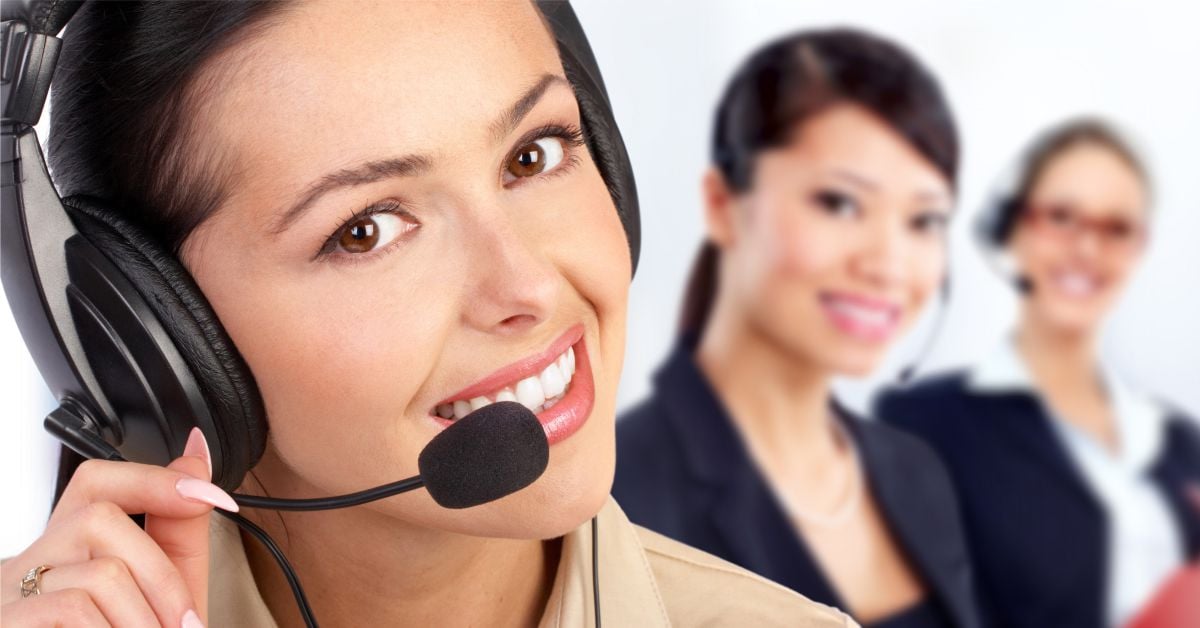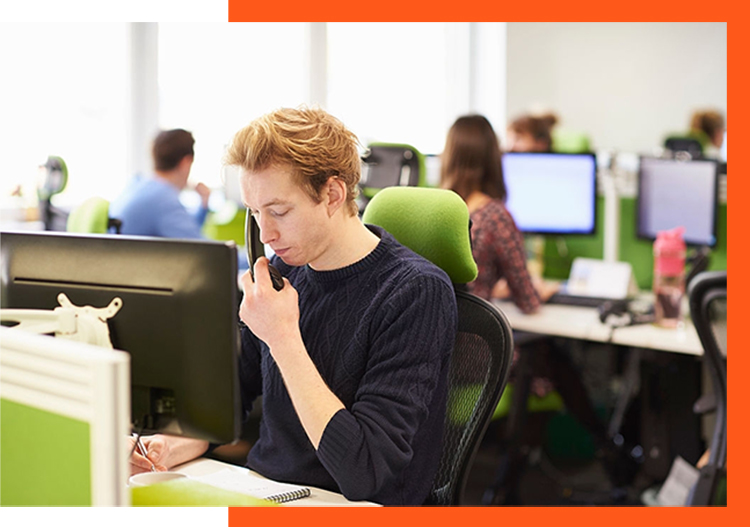All Categories
Featured
Table of Contents
- – Who Makes The Best What Is The Difference Betwe...
- – What Is The Best Telephone Answering Services ...
- – Which Is Best The Best Answering Service For C...
- – What Is The Best 17 Reasons Why You Need A Te...
- – Who Is The Best Phone Answering Services - Ru...
- – What Is The Best Virtual Receptionist & Phon...
Who Makes The Best What Is The Difference Between An Answering Service And ...
This device and its successors were designed by Sava Jacobson, an electrical engineer with a private consulting company. While early voice mail used magnetic tape technology, most modern-day devices uses strong state memory storage; some gadgets utilize a combination of both, with a solid-state circuit for the outgoing message and a cassette for the incoming messages.
"toll saving" below) (call answering services). This works if the owner is evaluating calls and does not want to talk to all callers. In any case after going, the calling celebration needs to be notified about the call having actually been responded to (in many cases this starts the charging), either by some remark of the operator, or by some greeting message of the little bit, or addressed to non-human callers (e.
This holds specifically for the Littles with digitally saved greeting messages or for earlier devices (before the rise of microcassettes) with a special endless loop tape, separate from a 2nd cassette, committed to recording. There have actually been answer-only gadgets without any recording abilities, where the welcoming message needed to inform callers of a state of existing unattainability, or e (reception services).
What Is The Best Telephone Answering Services To Get Right Now

about schedule hours. In tape-recording Littles the greeting normally contains an invitation to leave a message "after the beep". An answering machine that utilizes a microcassette to tape messages On a dual-cassette answerphone, there is an outbound cassette, which after the defined variety of rings plays a pre-recorded message to the caller.

Single-cassette answering makers consist of the outbound message at the start of the tape and incoming messages on the staying area. They initially play the announcement, then fast-forward to the next readily available area for recording, then record the caller's message. If there are lots of previous messages, fast-forwarding through them can trigger a significant delay.
This beep is typically referred to in the welcoming message, asking for that the caller leave a message "after the beep". Littles with digital storage for the tape-recorded messages do not reveal this hold-up, obviously. A little might use a push-button control facility, where the answerphone owner can sound the home number and, by getting in a code on the remote telephone's keypad, can listen to taped messages, or erase them, even when away from house.
Which Is Best The Best Answering Service For Clinics Brand

Thereby the device increases the number of rings after which it addresses the call (usually by 2, leading to 4 rings), if no unread messages are presently stored, however answers after the set variety of rings (usually 2) if there are unread messages. This permits the owner to find out whether there are messages waiting; if there are none, the owner can hang up the phone on the, e.
Some devices likewise allow themselves to be from another location activated, if they have been switched off, by calling and letting the phone ring a certain large number of times (generally 10-15). Some service providers desert calls currently after a smaller sized variety of rings, making remote activation difficult. In the early days of Little bits an unique transmitter for DTMF tones (dual-tone multi-frequency signalling) was regionally required for remote control, since the formerly used pulse dialling is not apt to communicate appropriate signalling along an active connection, and the dual-tone multi-frequency signalling was implemented step-by-step.
Any inbound call is not recognizable with respect to these residential or commercial properties in advance of going "off hook" by the terminal devices. So after going off hook the calls should be switched to appropriate gadgets and only the voice-type is right away accessible to a human, however possibly, nonetheless should be routed to a LITTLE BIT (e.
What Is The Best 17 Reasons Why You Need A Telephone Answering Service Manufacturer
What if I told you that you do not have to in fact get your device when answering a customer call? Somebody else will. So hassle-free, best? Responding to telephone call doesn't need someone to be on the other end of the line. Efficient automated phone systems can do the trick just as efficiently as a live representative and sometimes even much better.
An automatic answering service or interactive voice response system is a phone system that interacts with callers without a live individual on the line - answer phone service. When business use this innovation, customers can get the response to a concern about your company just by using interactions set up on a pre-programmed call flow.
Although live operators update the client service experience, numerous calls do not need human interaction. An easy documented message or instructions on how a client can obtain a piece of details typically resolves a caller's instant need - call answering services. Automated answering services are an easy and efficient way to direct inbound calls to the right person.
Who Is The Best Phone Answering Services - Ruby Receptionist Services Company?
Notification that when you call a company, either for support or item questions, the very first thing you will hear is a pre-recorded voice welcoming and a series of options like press 1 for customer care, press 2 for questions, and so on. The pre-recorded choices branch out to other choices depending upon the customer's choice.
The phone tree system assists direct callers to the best individual or department using the keypad on a cellphone. In some circumstances, callers can utilize their voices. It's worth noting that auto-attendant alternatives aren't restricted to the 10 numbers on a phone's keypad. As soon as the caller has picked their first alternative, you can create a multi-level auto-attendant that utilizes sub-menus to direct the caller to the best kind of support.
The caller does not need to interact with an individual if the auto-attendant phone system can handle their issue. The automatic service can path callers to an employee if they reach a "dead end" and need support from a live agent. It is pricey to hire an operator or executive assistant.
What Is The Best Virtual Receptionist & Phone Answering Services Australia Service In My Area?
Automated answering services, on the other hand, are considerably more economical and provide substantial cost savings at approximately $200-$420/month. Even if you do not have devoted personnel to manage call routing and management, an automatic answering service enhances performance by enabling your team to concentrate on their strengths so they can more effectively invest their time on the phone.
A sales lead routed to customer service is a lost shot. If a customer who has item concerns reaches the incorrect department or gets incomplete responses from well-meaning staff members who are less trained to handle a specific kind of question, it can be a reason for frustration and discontentment. An automated answering system can reduce the number of misrouted calls, consequently helping your employees make better use of their phone time while freeing up time in their calendar for other jobs.
With Automated Answering Systems, you can create a tailored experience for both your staff and your callers. Make a recording of your main welcoming, and merely upgrade it regularly to reflect what is going on in your organization. You can produce as lots of departments or menu alternatives as you want.
Table of Contents
- – Who Makes The Best What Is The Difference Betwe...
- – What Is The Best Telephone Answering Services ...
- – Which Is Best The Best Answering Service For C...
- – What Is The Best 17 Reasons Why You Need A Te...
- – Who Is The Best Phone Answering Services - Ru...
- – What Is The Best Virtual Receptionist & Phon...
Latest Posts
Affordable After Hours Answering – Australia
Fast Custom Phone Answering
Guaranteed Virtual Receptionist Near Me – SA
More
Latest Posts
Affordable After Hours Answering – Australia
Fast Custom Phone Answering
Guaranteed Virtual Receptionist Near Me – SA